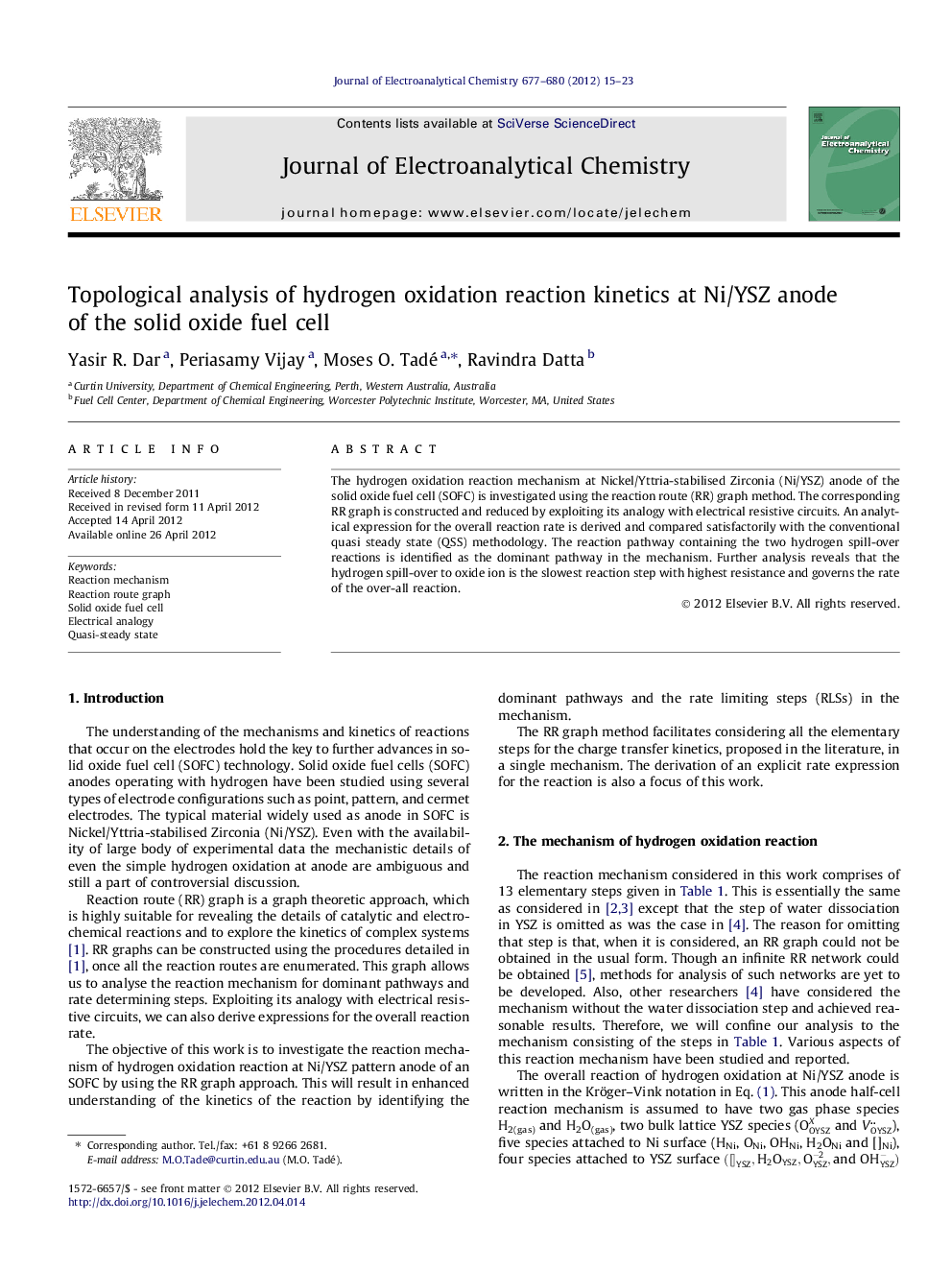| Article ID | Journal | Published Year | Pages | File Type |
|---|---|---|---|---|
| 219259 | Journal of Electroanalytical Chemistry | 2012 | 9 Pages |
The hydrogen oxidation reaction mechanism at Nickel/Yttria-stabilised Zirconia (Ni/YSZ) anode of the solid oxide fuel cell (SOFC) is investigated using the reaction route (RR) graph method. The corresponding RR graph is constructed and reduced by exploiting its analogy with electrical resistive circuits. An analytical expression for the overall reaction rate is derived and compared satisfactorily with the conventional quasi steady state (QSS) methodology. The reaction pathway containing the two hydrogen spill-over reactions is identified as the dominant pathway in the mechanism. Further analysis reveals that the hydrogen spill-over to oxide ion is the slowest reaction step with highest resistance and governs the rate of the over-all reaction.
► Solid oxide fuel cell anodic reaction is analysed using reaction route graph approach. ► Analogy with electrical circuits utilised to analyse the mechanism. ► The dominant pathway and the rate determining step are identified. ► An analytical expression is derived for the reaction rate.
